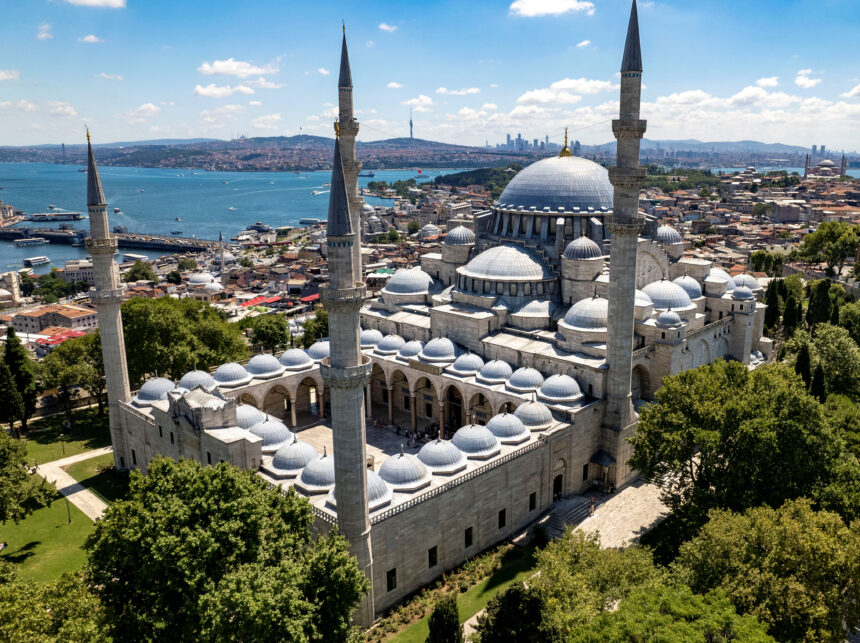Istanbul is a great city where art, history, and customs from hundreds of years ago mix perfectly with the busy life of today. This fun town is one of the most culturally rich in the world. It has a lot of historical landmarks and cultural events that show off how it connects Europe and Asia. This list of the 10 most important cultural landmarks in Istanbul includes the most famous and influential places that have shaped the city’s history. There is a different cultural meaning for each place on this list in Istanbul.
They include lively bazaars, prominent museums, and beautiful churches and old palaces. Visitors visiting the Blue Mosque or the Hagia Sophia will be amazed by the stories, architecture, and customs that have been around for hundreds of years and empires. This carefully curated list has both famous and lesser-known places that can help you learn more about Istanbul’s rich cultural identity. This list of cultural landmarks in Istanbul that you have to see is great for travelers, history fans, and anyone who wants to learn more about other civilizations. It’s aimed to help you plan travels through the city that you’ll never forget. Use this extensive list to help you organize your trip and uncover the most important cultural attractions that really show off Istanbul’s lasting legacy.
Top Ten Cultural Spots In Istanbul You Should Visit
10. Spice Bazaar
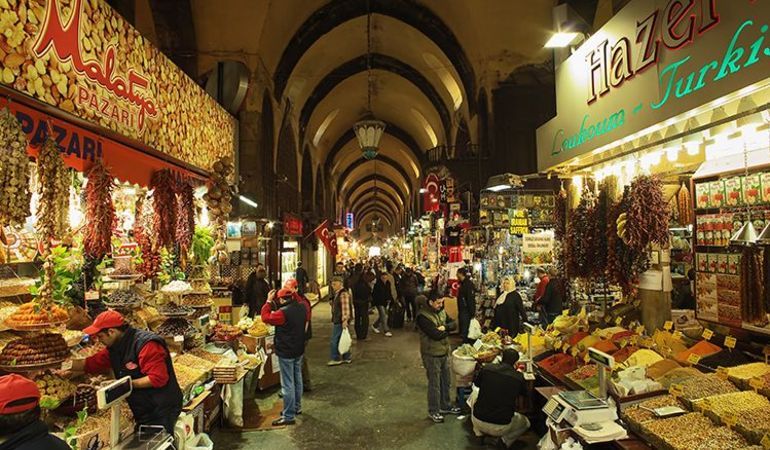
The Spice Bazaar, known locally as Mısır Çarşısı, is one of Istanbul’s oldest and most vibrant covered markets. Situated near the New Mosque in the Eminönü district, this marketplace has been operating since the 17th century and serves as a major attraction for those looking to immerse themselves in traditional Turkish commerce. The bazaar earned its name because the original funding for its construction came from taxes collected in Egypt during the Ottoman Empire.
Visitors are immediately drawn in by the exotic fragrances wafting through the air. Inside, rows of colorful stalls display aromatic spices, herbal teas, dried fruits, Turkish delight, saffron, sumac, pistachios, and an array of sweets. The scents alone tell a story of centuries of trade between continents. With its L-shaped layout and vaulted ceilings, the Spice Bazaar combines architectural charm with cultural richness.
What makes the bazaar stand out as a cultural site is its enduring connection to Istanbul’s culinary identity. Local vendors continue to use traditional scales and methods, creating an authentic experience for shoppers. While many markets around the world have modernized, the Spice Bazaar has retained its classical spirit.
Exploring this market provides a deeper understanding of Istanbul’s role in global trade and its multicultural legacy. It is more than a shopping experience; it is a living piece of history where flavors, customs, and craftsmanship come together under one roof.
9. Basilica Cistern
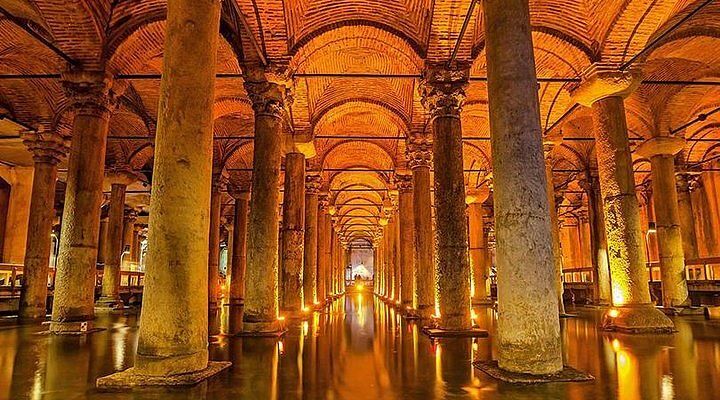
Hidden beneath the bustling streets of Istanbul’s historic peninsula lies the Basilica Cistern, a marvel of Byzantine engineering. Constructed in the 6th century under Emperor Justinian I, this subterranean water reservoir once supplied the Great Palace and surrounding buildings with fresh water. Today, it stands as one of the most atmospheric and unique cultural attractions in the city.
Upon descending the stone staircase into the underground chamber, visitors are greeted by a forest of 336 marble columns rising from a shallow pool. These columns, many of which were repurposed from older Roman structures, display a mix of classical styles. Soft lighting and ambient sounds enhance the ethereal atmosphere, creating a dreamlike space that feels removed from the modern world.
Two of the most intriguing features of the cistern are the Medusa heads, used as column bases at the rear of the structure. These ancient sculptures add a mysterious element, sparking debates and legends about their origin and orientation. The entire space is supported by brick vaults and arches, showcasing advanced techniques used during the Byzantine era.
The Basilica Cistern is not just an architectural wonder but a testament to the innovation and vision of early engineers. Its survival through centuries of earthquakes and regime changes highlights its historical importance. For those seeking a quieter, more mystical experience of Istanbul, this underground palace offers a remarkable journey into the depths of the city’s past.
8. Galata Tower
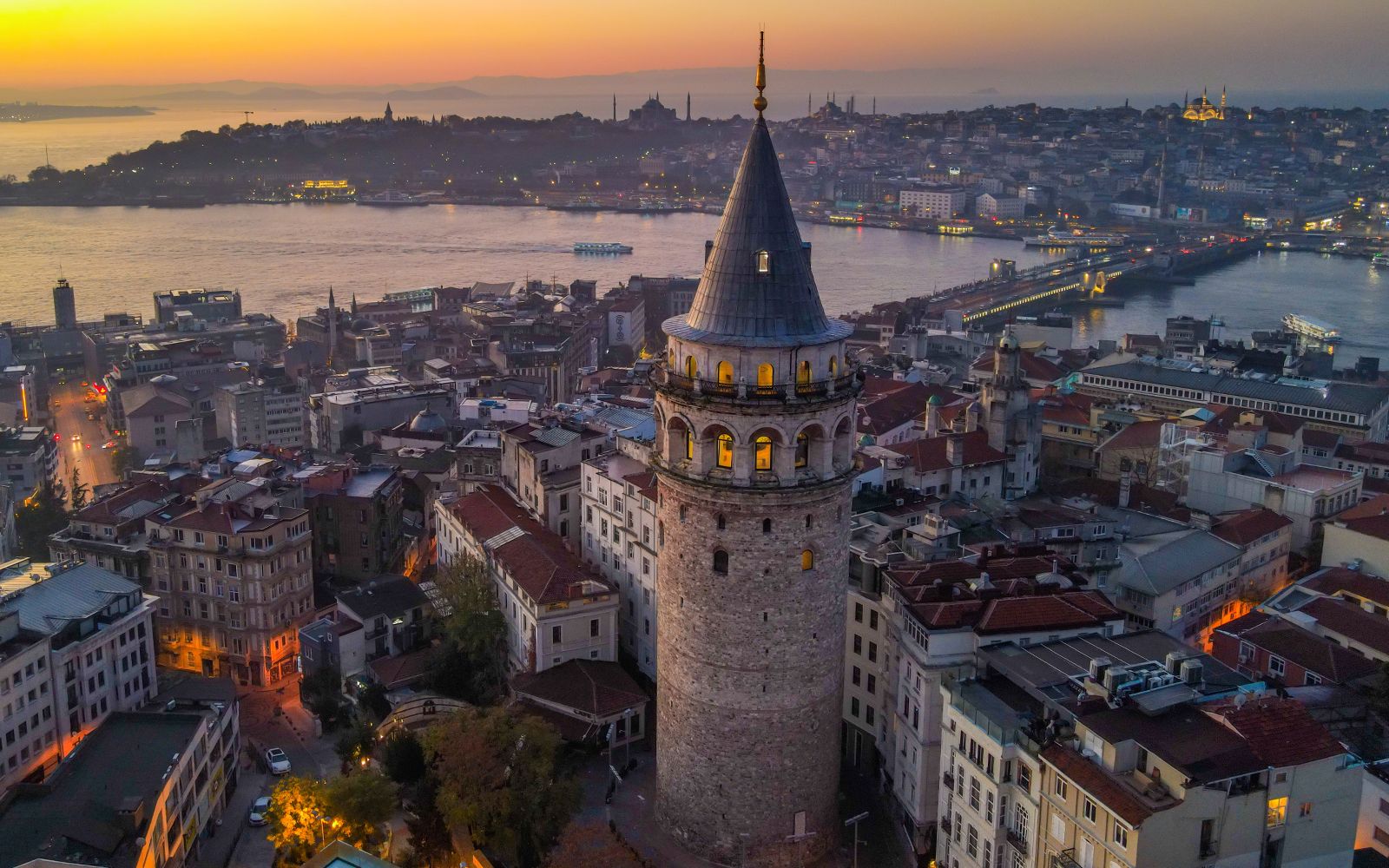
Standing tall above the historic Galata district, the Galata Tower is one of the most iconic landmarks in Istanbul. Originally built in the 14th century by the Genoese colony in Constantinople, this medieval stone tower served as a watchtower for the walled city and has undergone numerous restorations over time. Its robust cylindrical structure rises over 60 meters and offers panoramic views of the Bosphorus, the Golden Horn, and the skyline of old Istanbul.
Visitors climb or take an elevator to the observation deck, where they can experience breathtaking 360-degree vistas of the city. From this vantage point, landmarks such as the Hagia Sophia, Blue Mosque, and Topkapı Palace come into view, revealing Istanbul’s unique topography and historical layers. Sunset is a particularly popular time to visit, as the golden hues cast a magical glow across the rooftops and waterways.
Beyond the view, the Galata Tower also houses a small museum and exhibition space that details its long and storied history. It has served various functions over the centuries, including as a fire watchtower, military outpost, and even an astronomical observatory during Ottoman times.
The Galata Tower is a powerful cultural symbol that connects Istanbul’s European past with its vibrant present. Its commanding presence continues to captivate visitors and residents alike, making it an essential stop for those who want to experience the city’s architectural legacy and enduring spirit.
7. Dolmabahçe Palace
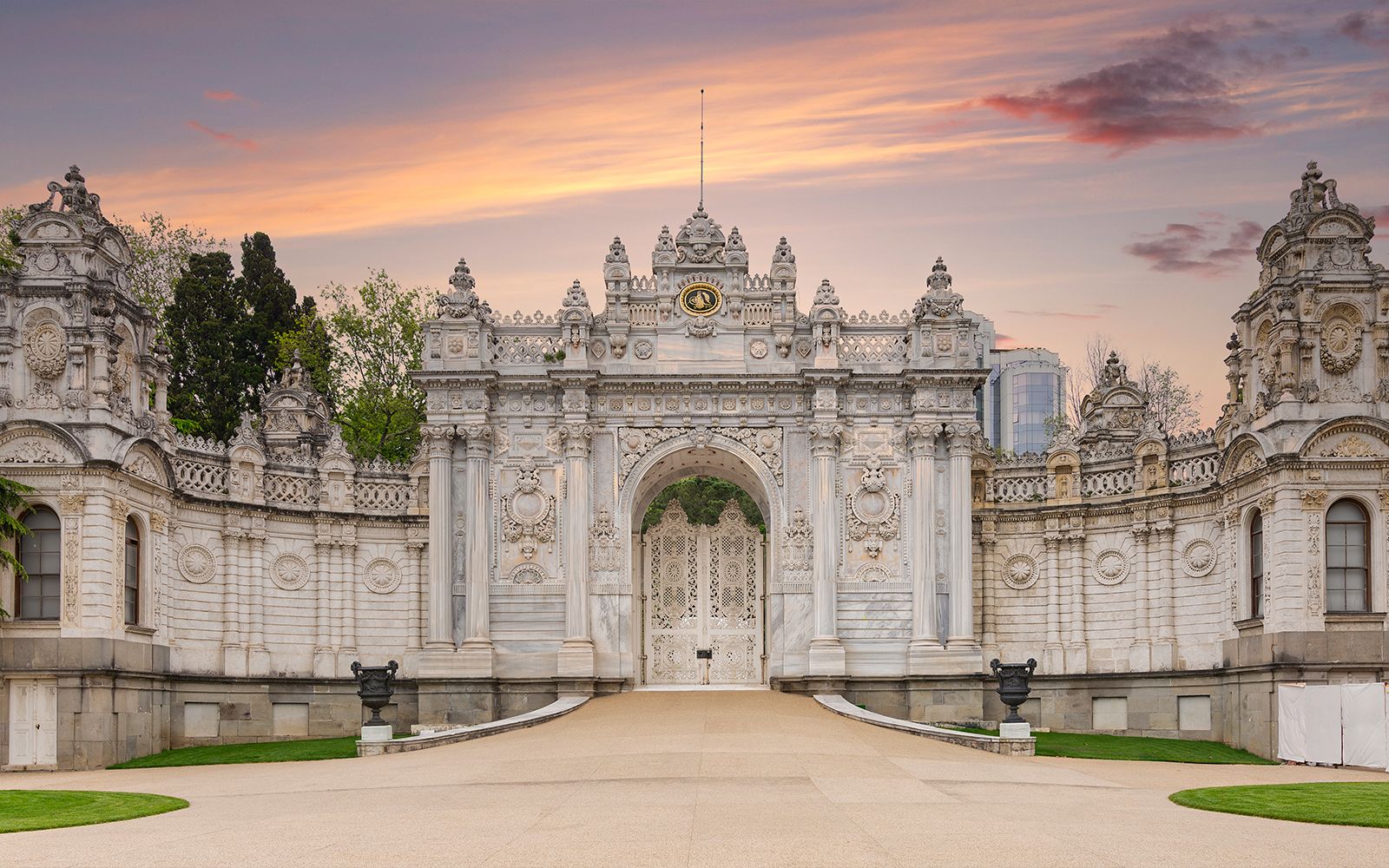
Located on the shores of the Bosphorus, Dolmabahçe Palace is a striking example of European-influenced Ottoman architecture. Built in the mid-19th century by Sultan Abdülmecid I, this lavish residence replaced the more traditional Topkapı Palace as the main administrative center of the Ottoman Empire. Its opulence and grandeur mark a turning point in Ottoman design, influenced by baroque, rococo, and neoclassical elements combined with traditional Turkish motifs.
The palace features over two hundred rooms, forty halls, and a grand ceremonial staircase, all decorated with crystal chandeliers, gold leaf, silk drapes, and French furniture. The world’s largest Bohemian crystal chandelier hangs in the ceremonial hall, weighing over four tons. The luxury within these walls reflects the empire’s attempt to modernize and project power on the global stage.
Dolmabahçe is also historically significant for being the place where Mustafa Kemal Atatürk, the founder of modern Turkey, spent his final days. His bedroom remains preserved as it was, a solemn reminder of his enduring legacy.
A visit to Dolmabahçe Palace is more than a tour of a royal residence; it is a window into a pivotal era of transformation. The building tells the story of an empire adapting to modernity while maintaining its deep cultural roots. Its beauty and historical resonance make it one of Istanbul’s most captivating cultural sites.
6. Süleymaniye Mosque
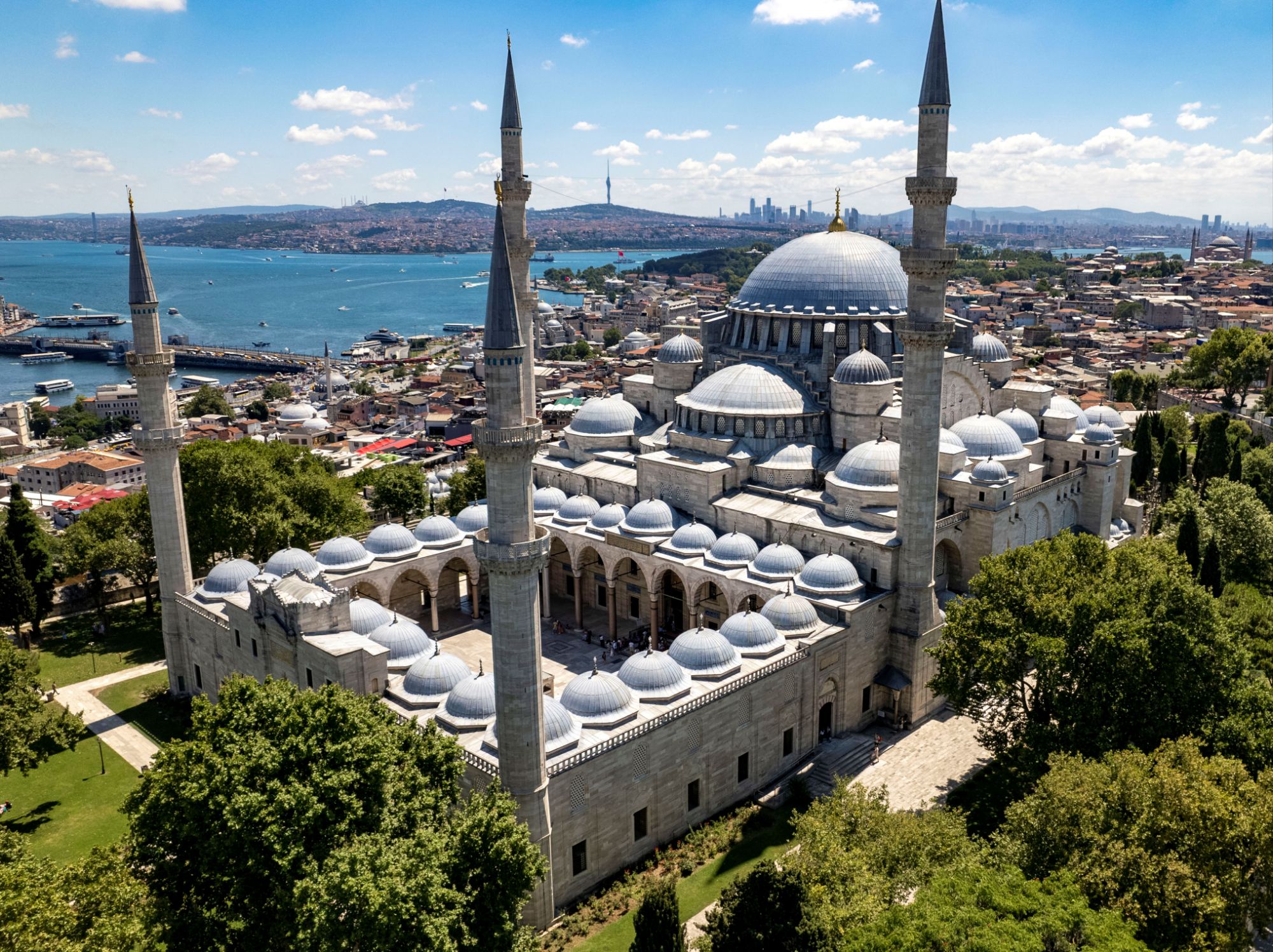
Overlooking the Golden Horn from one of Istanbul’s highest points, the Süleymaniye Mosque stands as a crowning achievement of Ottoman architecture. Commissioned by Sultan Suleiman the Magnificent in the 16th century, this masterpiece was designed by the legendary architect Mimar Sinan. It not only functions as a place of worship but also embodies the grandeur and sophistication of classical Ottoman design.
The mosque’s architectural balance and symmetrical proportions make it one of the most aesthetically pleasing buildings in the city. Its central dome is flanked by semi-domes and slender minarets that pierce the skyline. Inside, visitors are met with a serene atmosphere enhanced by stained glass windows, intricate Iznik tile work, and subtle calligraphy panels. The acoustic engineering allows for prayer recitations to be heard clearly without amplification, showcasing Sinan’s architectural genius.
Surrounding the mosque is a large complex that once included a hospital, school, library, bathhouse, and soup kitchen, all built to serve the local community. The mosque’s courtyard offers sweeping views of the Bosphorus and Golden Horn, making it a tranquil spot to rest and reflect.
Visiting the Süleymaniye Mosque provides more than just visual pleasure. It opens a door to understanding the religious, educational, and social roles that mosques played in the Ottoman Empire. The site remains a powerful symbol of Istanbul’s Islamic heritage and architectural brilliance.
5. Grand Bazaar
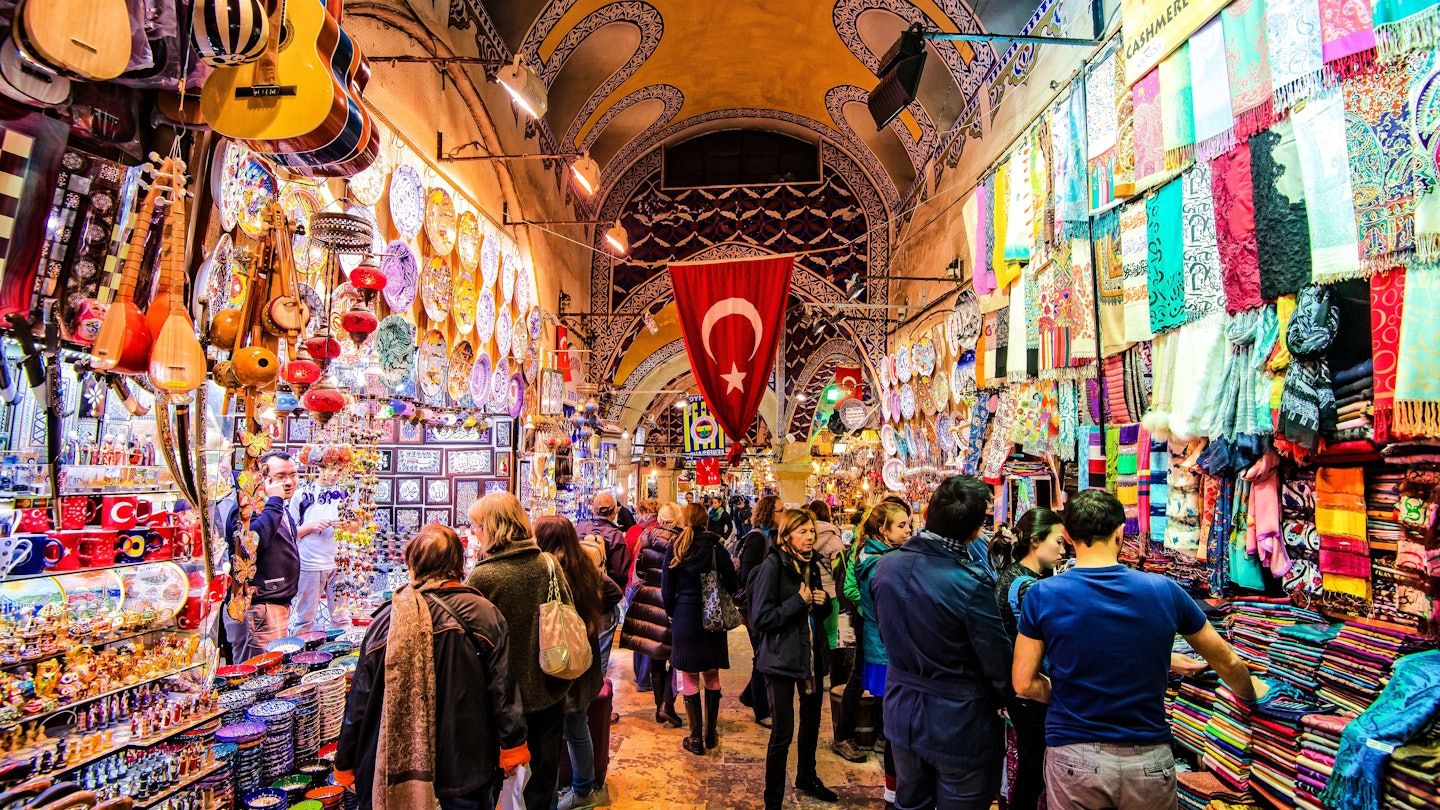
The Grand Bazaar is not just a marketplace; it is a cultural institution that has shaped the commercial life of Istanbul for over five centuries. With origins dating back to the 15th century, this massive covered market spans over 30,000 square meters and includes more than 4,000 shops arranged across 60 streets. It is considered one of the largest and oldest bazaars in the world.
As soon as visitors enter one of its many gates, they are immersed in a lively atmosphere filled with the sights and sounds of trade. Artisans, jewelers, carpet sellers, and spice merchants call out to passersby, offering everything from antique coins and ceramics to fine textiles and gold jewelry. Each section of the bazaar specializes in different types of goods, preserving the guild-based structure of Ottoman commerce.
The architecture of the Grand Bazaar is equally impressive, with domed ceilings, arched walkways, and elaborately painted tiles creating a sense of grandeur. The bazaar also houses fountains, mosques, and cafes, making it a self-contained cultural ecosystem.
Beyond commerce, the Grand Bazaar represents the spirit of Istanbul as a crossroads between East and West. It reflects the city’s history of trade, craftsmanship, and cultural exchange. For those looking to experience Istanbul’s living history, there is no better place to explore.
4. Blue Mosque
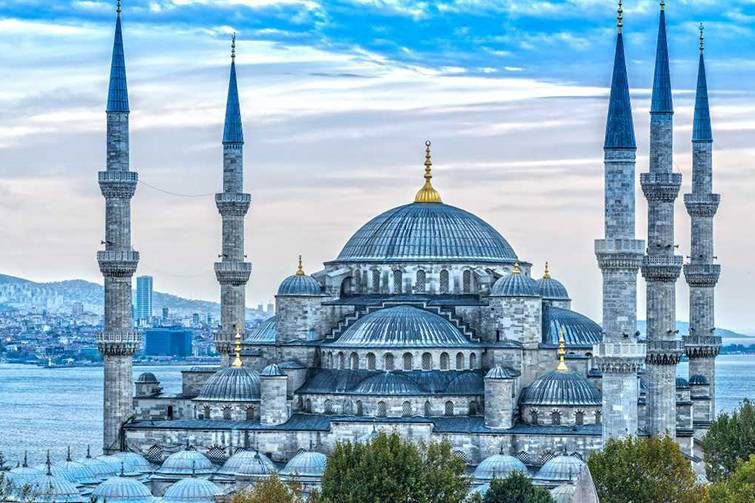
The Blue Mosque, officially known as the Sultan Ahmed Mosque, is one of the most iconic religious landmarks in Istanbul. Completed in 1616 during the reign of Sultan Ahmed I, this stunning mosque is renowned for its six elegant minarets and breathtaking interior adorned with over 20,000 handmade blue Iznik tiles. These tiles give the mosque its popular nickname and create a soothing ambiance throughout the prayer hall.
The mosque’s design blends traditional Islamic architecture with elements from the Byzantine era, particularly the Hagia Sophia, which stands directly opposite. Its large central dome is supported by four massive columns, often called “elephant feet,” and the spacious interior is flooded with natural light from more than 200 stained glass windows. The calligraphy, carved marble, and geometric designs all contribute to its spiritual and artistic significance.
The Blue Mosque remains an active place of worship, with daily prayers held inside. Visitors are welcome outside prayer times and are encouraged to dress modestly and observe local customs. The courtyard and surrounding gardens provide beautiful vantage points for photography and reflection.
As one of the most photographed buildings in Istanbul, the Blue Mosque continues to symbolize the city’s religious devotion and artistic heritage. It stands as a living monument to the Ottoman Empire’s golden age.
3. Topkapı Palace
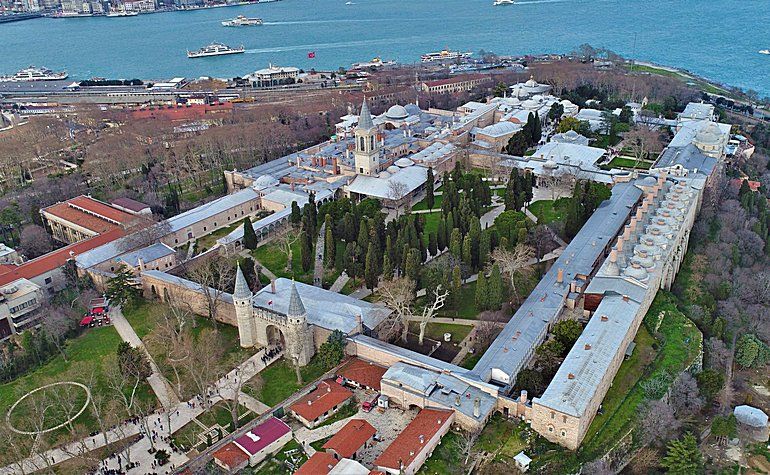
Topkapı Palace served as the primary residence and administrative center of Ottoman sultans for nearly four centuries. Situated on a strategic promontory overlooking the Bosphorus, Golden Horn, and Sea of Marmara, this sprawling complex is a microcosm of Ottoman court life and imperial power. Built in the 15th century by Sultan Mehmed II after the conquest of Constantinople, the palace is now a museum that offers a rare look into the opulence and complexity of the empire.
The palace grounds include four main courtyards and dozens of smaller buildings, including the Imperial Harem, audience chambers, kitchens, treasury, and sacred relics room. Visitors can view priceless artifacts such as the Topkapı Dagger, the Spoonmaker’s Diamond, and relics believed to belong to prophets and caliphs. Each building reveals different aspects of court life, from military strategy and diplomacy to daily routines and spiritual practices.
Architecturally, Topkapı Palace is a blend of Islamic, Ottoman, and Byzantine styles, with lush gardens, intricate tile work, and domed pavilions. The Harem, once closed to outsiders, offers an intimate look at the private lives of the sultans and their families.
Topkapı Palace is more than a historical site—it is a symbol of imperial majesty and governance. It reflects the values, hierarchy, and artistic achievements of one of history’s most powerful empires.
2. Hagia Sophia
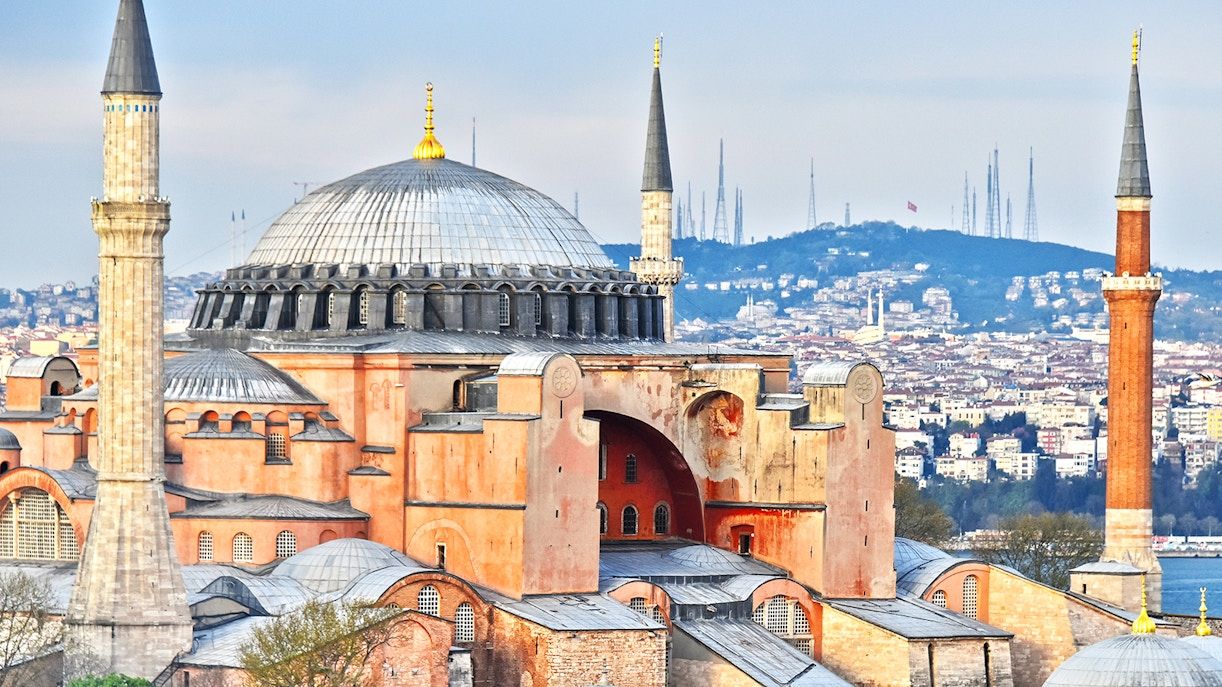
The Hagia Sophia is perhaps the most culturally layered monument in Istanbul. Originally built in the 6th century by Byzantine Emperor Justinian I, it served as the world’s largest cathedral for nearly a thousand years. After the Ottoman conquest of Constantinople in 1453, it was converted into a mosque and remained so for nearly five centuries. In the 20th century, it became a museum, and more recently, it has resumed its role as a mosque while remaining open to tourists.
This architectural marvel is famed for its enormous dome, which appears to float weightlessly above the central nave thanks to a system of hidden supports and windows. Inside, visitors can admire a mix of Christian mosaics, Islamic calligraphy, marble columns, and intricate ceiling patterns. This blending of two great faiths and cultures makes the Hagia Sophia a unique space of historical coexistence.
Every part of the Hagia Sophia tells a story—from the worn marble floors to the massive medallions bearing the names of Allah and the Prophet Muhammad. The atmosphere is reverent, reflective, and filled with centuries of human history.
Visiting the Hagia Sophia is not just a tour of a building but an emotional journey through the spiritual and political transformations that have shaped Istanbul. It remains a global symbol of unity, endurance, and cultural fusion.
1. Sultanahmet District
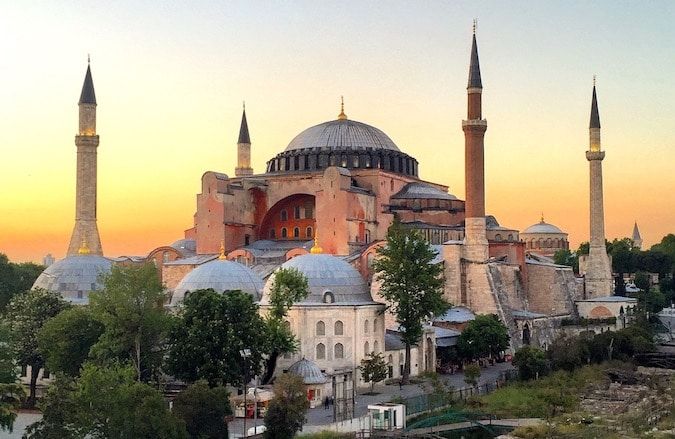
At the heart of Istanbul’s old city lies the Sultanahmet District, a UNESCO World Heritage Site that brings together the most important cultural and historical landmarks in one compact area. This district is often the first stop for visitors and serves as a living museum of the empires that once ruled here.
Within walking distance, one can visit the Hagia Sophia, Blue Mosque, Basilica Cistern, Topkapı Palace, and the ancient Hippodrome. Each site reveals a different layer of Istanbul’s past, from Roman chariot races to Byzantine Christianity and Ottoman sultans. The layout of the district, with its cobblestone streets and restored Ottoman houses, reflects the city’s deep respect for heritage.
The public squares, bustling markets, and nearby museums contribute to the area’s vibrant atmosphere. Street vendors sell simit and roasted chestnuts, while call to prayer echoes across minarets. Despite the district’s popularity with tourists, it retains a strong local character.
Sultanahmet is not just a location; it is the cultural soul of Istanbul. Spending time here offers an all-encompassing experience of the city’s architectural beauty, spiritual depth, and historic grandeur. It is the most essential destination for anyone seeking to connect with the roots of one of the world’s most influential cities.

